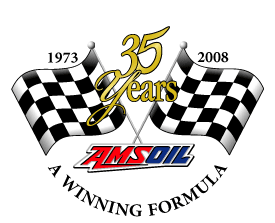Components
of Lubricants!
How
are Synthetic Oils
Different?
Lubricants
are generally
composed of two
groups of materials.
The first is a base
or stock fluid. This
fluid will make up
75-95 percent of the
finished product.
The most commonly
used stocks today
are derived from
petroleum crude oil.
Other stocks are
derived from
chemical
synthesizing. These
stocks are also
referred to as
mineral or synthetic
oils.
To this, base or
stock chemical
compounds may be
added to enhance or
impart new
properties to the
mineral oil. These
compounds are
commonly referred to
as additives. The
use of such special
chemical compounds
is another way to
minimize friction
and wear. The main
role of these
compounds is to
offer protection
when the lubricating
fluid can not
maintain component
separation.
Although the
engineering of each
synthetic base stock
varies depending on
the particular
stock, synthetics
are generally made
through a reaction
process. This
reaction process
significantly
improves the
consistency of the
stock and its
molecular
uniformity. Mineral
stocks, on the other
hand, are obtained
through a process of
distillation.
Distillation
slightly limits the
molecular diversity
that may exist
within the stock,
but does not
completely eliminate
nonessential
molecular
structures. This is
important because
unnecessary
molecular structures
produce variations
in the stock's
performance. The
ideal lubricants
chemical composition
is one in which the
molecular
construction is
identical
throughout, such as
in a synthetic base
stock. Because of
the way synthetic
stocks are produced,
they are molecularly
uniform and contain
significantly less
undesirable
materials than a
mineral base stock.
Molecular uniformity
also affects the
properties that each
type of lubricant
possesses. The
properties of
mineral oils tend to
vary due to
inconsistencies in
the crude from which
they are obtained.
The properties and
performance features
of synthetics, on
the other hand, are
very predictable.
Once again, this is
due to their
molecular
uniformity.
AMSOIL
synthetic lubricants
are formulated to
take advantage of
the superior
properties of
synthetic base
stocks. They provide
excellent
lubrication and wear
protection and have
been designed to
resist the chemical
breakdown processes
that limit the
service life of
conventional
mineral-based oils.
|
|
|



